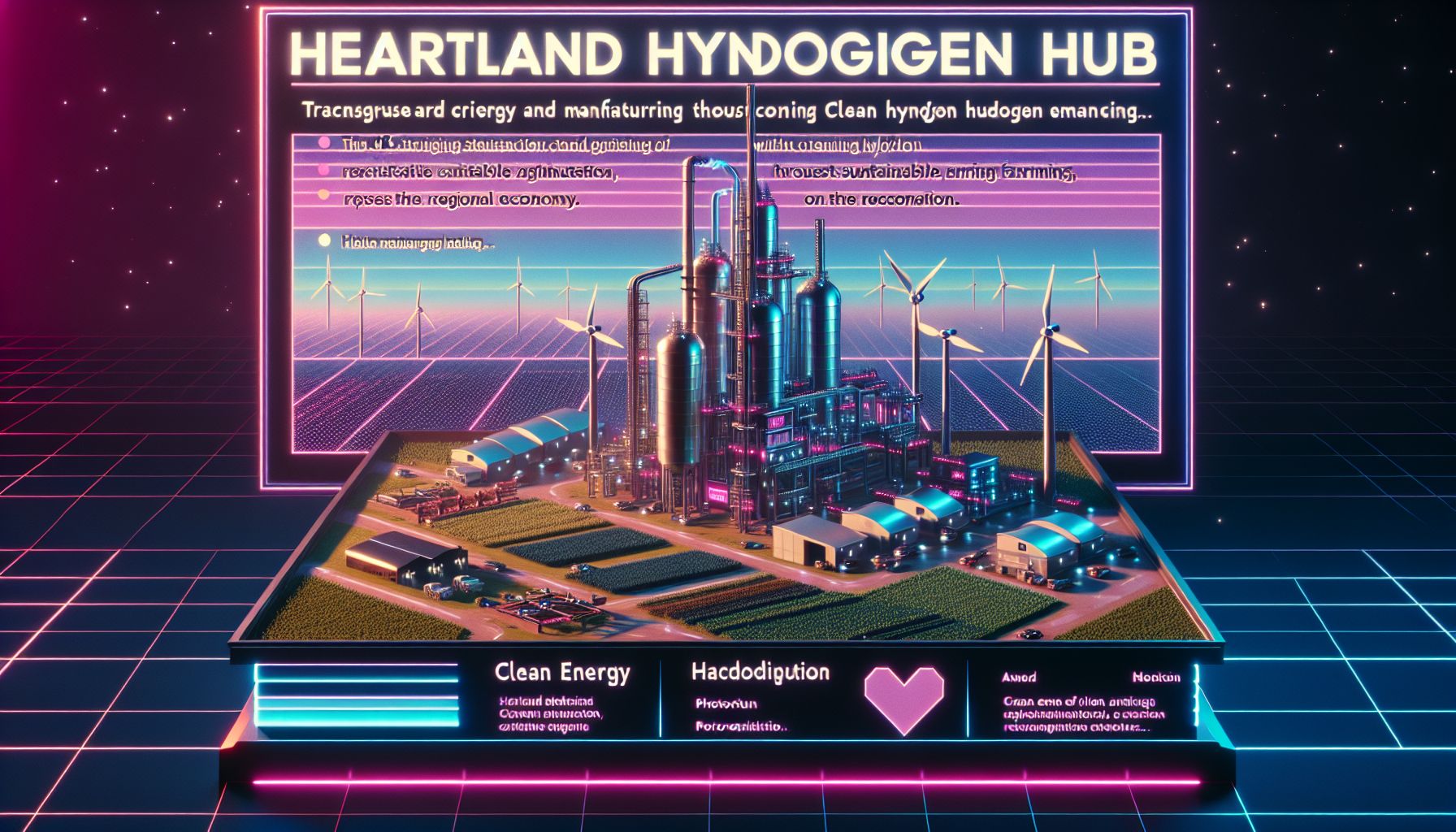Heartland Hydrogen Hub: Pioneering Clean Energy in the Midwest

Heartland, Thursday, 30 January 2025.
The Heartland Hydrogen Hub, a U.S. initiative, is decarbonising agriculture and manufacturing with clean hydrogen, reducing carbon emissions. It’s a game-changer for sustainable farming and regional economy.
A Major Investment in Clean Energy
I’m excited to share that the U.S. Department of Energy has just made a significant commitment to the Heartland Hydrogen Hub. The project received $20 million initial funding, part of a larger federal investment that could reach up to $925 million [2]. As one of seven Regional Clean Hydrogen Hubs selected by the DOE, this initiative launched its crucial Phase 1 just yesterday, on January 29, 2025 [1].
Ambitious Production Goals
The scope of this project is truly impressive. I can tell you that the Hub aims to produce approximately 160 metric tons of clean hydrogen daily [1]. This clean hydrogen production is expected to reduce carbon dioxide emissions by 525,000 metric tons annually - equivalent to removing more than 120,000 gasoline-powered cars from our roads [2]. What makes this particularly exciting is how it will transform regional agriculture and manufacturing.
Agricultural Revolution Through Innovation
One aspect that really stands out to me is the Hub’s focus on agricultural sustainability. Atlas Agro North America is taking a leading role, planning to use renewable hydrogen for manufacturing essential farming products like ammonia, nitric acid, and ammonium nitrate [1]. This initiative spans across six states - North Dakota, South Dakota, Minnesota, Montana, Wisconsin, and Colorado [1]. The goal is to increase the supply of low-carbon fertilizers in the region while reducing costs for farmers [2].
Infrastructure and Implementation
The project’s success relies heavily on strong partnerships. Xcel Energy is currently evaluating the existing grid infrastructure across the Upper Midwest and Colorado to support hydrogen production [1]. The University of North Dakota Energy & Environmental Research Center (EERC) is leading this collaborative effort, working alongside Atlas Agro and Xcel Energy Services Inc. [1]. Phase 1, which we’re now entering, will focus on planning, design, and community engagement over the next 24 months [1].